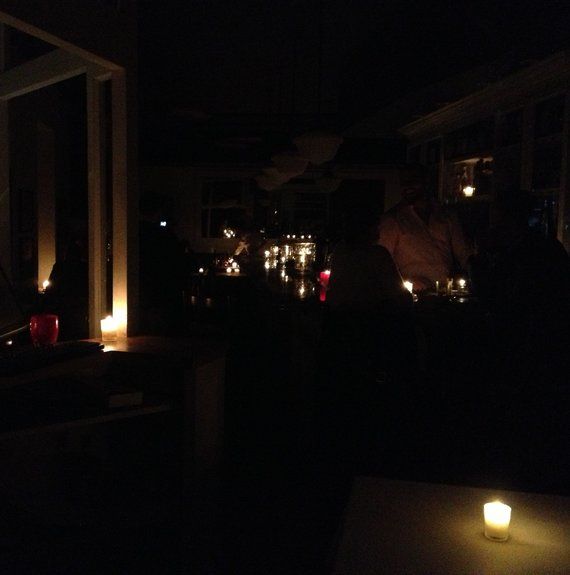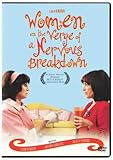
On Saturday, the night the lights came on, I turned mine off, rode the elevator to the ground floor of my building in Chelsea, and walked into the dark of the West Village.
I had stayed in my apartment through Sandy and her aftermath, so for five days, downtown Manhattan’s standard storm week inconveniences were mine: no power, heat, or water. I counted myself lucky. My building didn’t flood. No children, old people, or dogs depended on my care. I had blankets, candles, flashlight; a bathtub full of water to keep the toilet working fine; money for cabs and food; and legs that didn’t mind the daily stairwell roundtrips to and from my 15th floor place. Having just finished a work project that consumed the previous weekends, I gave myself time off.
I woke at dawn, ate supper when the sun set, and slept straight through the nights. My rest gorged on dark and quiet as if sleep were celebration, free from horns and big rigs, sirens, sidewalk screams and glare — the gang that, most evenings, steals into my room and snaps my dreams in pieces. (From my windows, as far as I could see, the only Chelsea buildings where bulbs burned were Google headquarters and one floodlit chapel at the General Theological Seminary.) In daylight, I walked right up the middle of deserted streets, stopped to read plaques posted on historic buildings, my eyes slowly scanning back and forth from texts to bricks. I learned names of things — corbels, lintels, eyebrow lintels — that I had always, apparently, been too busy to see.
Each day when I ventured uptown to shower at a gym, I saw life rush on as usual, and each day that experience raised an unsettling question in my mind. Which part of town was actually in the blackout? Electricity felt almost like a drug, every one of us a junkie. Jumpy people hurried in and out of brilliantly lit stores, buying things as if it were a birthright. All of us, it seemed, walked four feet off the ground, eyes focused on infinity, in the single-occupancy tunnels of perception that New Yorkers learn to build around ourselves, because we have to, so we can get where we want to go.
 I was as relieved as anyone when power was restored, but to my surprise, my bedside lamp triggered an immediate craving to go back down into the blackout zone, to see what powerless Manhattan looked like while it was still there to be seen. Near the top of the Village, on Greenwich Avenue, I walked southeast, drawn by a generator’s grinding buzz. A bar had set up a movie projector; Women on the Verge of a Nervous Breakdown played on the broad side of the white semi-trailer parked across the street. Then I veered southwest into the warren of townhouse brownstones, where for whole blocks, every building looked empty, but what light there was, was warm. Here and there, two or three were gathered in front rooms of parlor floors, drinking wine, smoking, smiling. Further west, a tiny handful of restaurants stood open. Lit by candles, tables glowed with the soft surprise of Easter eggs. I tried taking pictures with my iPhone: black rectangle after black rectangle, specked with firefly flecks of light.
I was as relieved as anyone when power was restored, but to my surprise, my bedside lamp triggered an immediate craving to go back down into the blackout zone, to see what powerless Manhattan looked like while it was still there to be seen. Near the top of the Village, on Greenwich Avenue, I walked southeast, drawn by a generator’s grinding buzz. A bar had set up a movie projector; Women on the Verge of a Nervous Breakdown played on the broad side of the white semi-trailer parked across the street. Then I veered southwest into the warren of townhouse brownstones, where for whole blocks, every building looked empty, but what light there was, was warm. Here and there, two or three were gathered in front rooms of parlor floors, drinking wine, smoking, smiling. Further west, a tiny handful of restaurants stood open. Lit by candles, tables glowed with the soft surprise of Easter eggs. I tried taking pictures with my iPhone: black rectangle after black rectangle, specked with firefly flecks of light.
Eventually, getting cold, I tacked back north. Cops directed traffic at 14th Street and Eighth Avenue, a makeshift gateway between have and have-not. At the edges of the crosswalk, red flares hissed on low tripods at foot level. Pausing there, I overheard a skinny young guy in sideways baseball cap and drop-crotch jeans talk on his cell phone — “I don’t know where to go” — and as I picked up my pace to pass him, a fat, limping woman, leaning on a stainless steel cane, stopped me to ask, “Where is Fourth Street?” She wore glasses, a purple flowered dress, and no coat. Even in the half-dark I could see she had bad teeth.
I pointed back to where I’d come from and started to explain, when the young guy put his phone away and interrupted us. “I’m headed that way,” he told the woman. “I can show you.”
Walking up Eighth Avenue, I turned for a moment to watch the skinny man take the fat lady where she needed to go. Then, with horn-blaring cars racing by, I built a tunnel around myself to get me home, and I wondered if this bright light on everything around me really always was so harsh.
Photo courtesy of the author.








